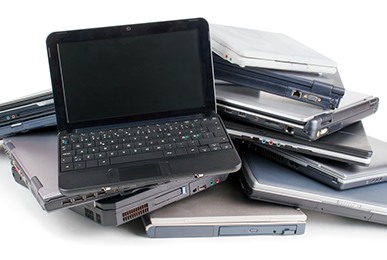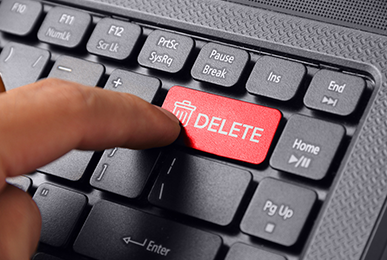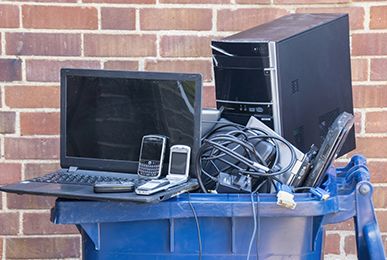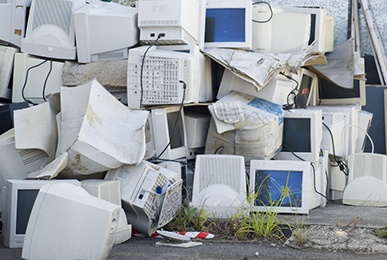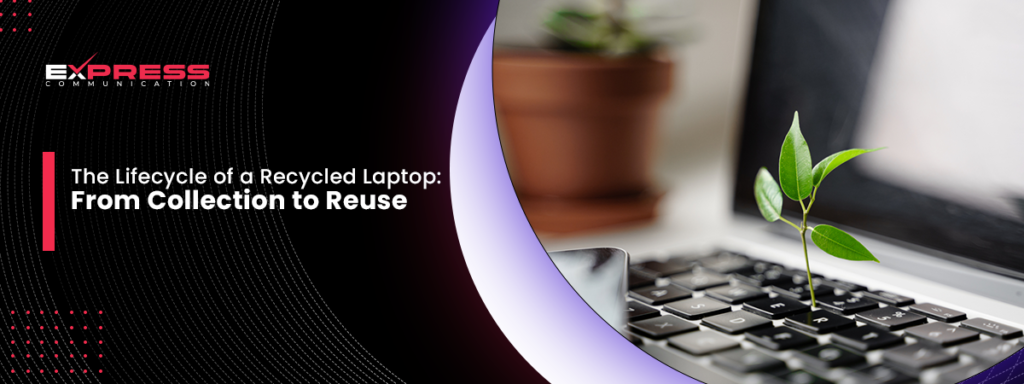
Hello, fellow tech enthusiasts and eco-warriors! Today, we’re diving into an exciting journey that not many of us think about—the life of a recycled laptop. Imagine your old laptop that has served you well but is now a bit too slow or has a cracked screen. Instead of ending up in a landfill, it can embark on a new adventure! In this blog, we’ll explore the entire process of laptop recycling, from the moment it’s collected to when it gets a second life. So, let’s get started and uncover the steps involved in giving these gadgets another chance!

Table of Contents
Step 1: The Collection of Old Laptops
The journey begins when you decide that it’s time to part ways with your old laptop. Instead of throwing it away, you can drop it off at a laptop recycling center or a special electronic waste collection event. These places are the starting blocks in the race to keep our planet clean.
At these centers, experts sort out the laptops to determine which can be refurbished and which will be taken apart for parts. They safely handle the batteries and other parts that could harm the environment if not disposed of properly.
Step 2: Sorting and Assessing
Once the laptops are collected, the real magic begins. Each laptop is carefully examined by technicians who decide if the laptop can be made to work again. They check everything—the screen, keyboard, battery, and internal components like the hard drive and motherboard.
If a laptop is chosen to be refurbished, it’s like winning a second chance. If needed, it will be cleaned up, fixed, and updated with newer software. Laptops that aren’t lucky enough to be refurbished aren’t forgotten. They are disassembled, and their parts are sorted. Valuable materials like aluminum, copper, and sometimes even gold are recovered. This part of the laptop recycling process is crucial because it helps conserve natural resources and reduces the need to mine new materials.
Step 3: Repair and Refurbish
The refurbishing process is thorough for the laptops marking a new beginning. Technicians repair or replace faulty parts, install the latest software updates, and ensure the laptop runs smoothly. It’s like giving the laptop a makeover to ensure it’s ready for its new owner.
These refurbished laptops are often donated to schools, and charities or sold at lower prices to people who need them but can’t afford new ones. This helps the environment by reducing waste and making technology accessible to more people.
Step 4: Management and Recycling the Unsalvageable
Not all parts of a laptop are reusable, and that’s okay! Advanced laptop recycling techniques come into play for those parts that can’t be brought back to life. Special machines grind up the components like plastics and metals, separating them into pure materials that can be used to make new products. This process is vital because it prevents harmful chemicals from old electronics from polluting the earth.
This stage of recycling is fascinating because it shows how every little piece of an old laptop can still be useful. It’s like each part has its mini-journey of transformation.
Step 5: The Journey of Recycled Materials
Once the materials have been separated and processed, they begin a new chapter in their lifecycle. Metals like aluminum and copper are melted down and reformed into sheets or coils that can be used to manufacture new products. Plastics are often shredded into tiny pellets, which can be used to create new electronic casings or other plastic items.
This part of the laptop recycling process is incredibly important because it reduces the need for new raw materials, which helps conserve energy and resources. For instance, recycling aluminum uses 95% less energy than producing new aluminum from raw ore. Similarly, recycled plastics save on oil and reduce greenhouse gas emissions. This shows how laptop recycling benefits the environment by reducing landfill waste and helps conserve natural resources and energy.
Step 6: Creating New Products
The recycled materials are ready to start their lives as part of new products. This could be anything from new laptops and smartphones to car parts and packaging materials. The possibilities are nearly endless! The journey from a used, old laptop to a new product is a perfect example of a circular economy, where nothing is wasted, and everything has value.
Imagine a plastic part from a laptop you used years ago now being part of someone else’s new phone or maybe the aluminum from your old laptop being used in an airplane! It’s exciting to think about how the parts of something we once owned continue to exist in many forms around us.

The Benefits of Laptop Management and Recycling
Laptop recycling has numerous benefits beyond just keeping old laptops out of landfills. Here are a few key advantages:
- Environmental Conservation: By recycling old laptops, we reduce the pollution and greenhouse gases from manufacturing new materials.
- Resource Efficiency: Recycled materials are used to make new products, which reduces the demand for new raw materials and saves energy.
- Economic Benefits: Laptop recycling creates jobs in the recycling and manufacturing industries and offers affordable, refurbished technology to those in need.
- Innovation and Sustainability: Management and Recycling encourages technological and material innovations, promoting a sustainable approach to production and consumption.
Conclusion
The lifecycle of a recycled laptop is a journey of transformation and opportunity. From the moment you decide to recycle your old laptop to the point where its materials are used in new products, every step is crucial for building a sustainable future. By participating in laptop recycling, we help protect our planet and contribute to a cycle of continuous reuse that benefits everyone.
Remember, next time you look at your old gadgets, think about the incredible journey they could embark on through laptop recycling. Let’s make an effort to support this amazing process and ensure that the lifecycle of our electronics continues in a way that benefits our world!

